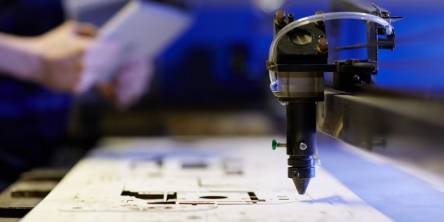Top 7 Challenges in Hardware Manufacturing (And How to Solve Them)

Hardware manufacturing leaves very little room for error. One mistake in the design or sourcing stage can set off a chain reaction that delays production, eats up budget, and frustrates your team.
If you’ve worked in this space, you’ve probably seen how fast things can go sideways. Still, most of the common issues are preventable if you know what to look out for.
In this article, you'll walk through seven of the biggest challenges in hardware manufacturing and how to fix them before they become serious problems.
1. Design Flaws That Cost Time and Money
Why it happens:
Design problems usually show up when things move too fast or the right people aren't in the loop. Maybe the prototype looks solid on screen, but once you try to source parts or test how it performs, the cracks start to show.
Sometimes it’s just a small detail someone missed—a measurement that’s off or an assumption that didn’t hold up. But even those small things can lead to rework, blown budgets, and delays you didn’t plan for.
What you can do:
Get your engineers and production teams involved early. Don’t wait until everything’s “final” to see how parts hold up in real conditions. Build rough prototypes early, even if they’re a bit messy, and put them in front of the people who’ll actually be using or assembling them.
Their feedback will catch things you might miss on paper. It’s way easier to fix problems during development than after you’ve already ordered hundreds of units.
Read more: 6 Things You Expect From A Hardware Store For Plastic Fittings
2. Sourcing Reliable Parts and Vendors
Why it happens:
Finding good suppliers isn't as easy as placing an order and hoping for the best. Long lead times, inconsistent quality, or sudden changes in availability can throw off your production schedule.
Some vendors may promise more than they can deliver, or they might not meet your quality standards once the order arrives. If you're working with overseas partners, time zones and communication gaps can make things even harder.
What you can do:
Start sourcing as early as possible and build a list of backup vendors. Don’t just go by price, ask for samples, read reviews, and check references.
When you find a supplier that delivers consistently, build that relationship. Regular check-ins, clear requirements, and realistic lead times will help keep things smooth on both sides.
3. Keeping Quality Consistent at Scale
Why it happens:
It’s one thing to get a few prototypes right. It’s a different story when you’re making hundreds or thousands of units. Quality tends to dip when teams move too fast or when processes aren’t clearly defined.
Without proper training and documentation, even a small change in material or technique can create a ripple effect that damages your reputation.
What you can do:
Create simple, step-by-step production guidelines and update them when changes are made. Set up clear quality checkpoints throughout the process, not just at the end.
Train your team to follow procedures the same way every time. You’re not aiming for perfection, but for consistency, and that starts with good habits.
4. Managing BOMs and Product Data
Why it happens:
When you’re dealing with multiple components, suppliers, and revisions, it’s easy to lose track of the details. A missing part number, a mislabeled item, or two people working from different versions of the BOM can lead to costly mistakes.
Some teams try to manage everything in spreadsheets, but that gets messy fast, especially when products change or scale up.
What you can do:
Use proper BOM services that keep your data organized and up to date. These tools help you track revisions, avoid duplicate parts, and make sure everyone’s on the same page.
You won’t have to dig through email chains or old files to find the latest version. That alone can save you hours and help you avoid production delays caused by simple data errors.
5. Dealing with Manufacturing Delays
Why it happens:
Even if your designs are solid and your parts are ready, delays can still pop up. Machines break, vendors run late, or internal teams fall out of sync.
When there’s no buffer in your schedule, even a one-day setback can throw off your entire timeline. These delays often pile up without warning if you don’t have a clear system for tracking progress.
What you can do:
Build some breathing room into your schedule. It’s tempting to cut things close to move fast, but giving yourself that buffer makes a difference. Break the process into clear stages and assign deadlines to each one.
Make sure everyone knows what’s expected and when. And if something slips, flag it early instead of waiting for it to become a bigger issue.
6. High Costs from Rework and Scrap
Why it happens:
Rework and scrap usually come from poor planning or unclear instructions. Maybe the design wasn’t production-ready. Maybe the assembly team didn’t get the latest update.
Either way, every time something has to be fixed or thrown out, it costs you time and money. If the same mistake keeps happening, it becomes a pattern that’s hard to break.
What you can do:
Start with a clear DFM (design for manufacturing) review before anything hits the floor. Get input from people who’ll actually build the product.
Run small test batches and check them closely before scaling. The more issues you catch early, the less you’ll waste later.
7. Lack of Coordination Between Teams
Why it happens:
Hardware projects move through a lot of hands—design, engineering, sourcing, manufacturing, QA. If those teams aren’t working off the same plan, things fall through the cracks.
Updates get missed, expectations don’t line up, and people end up blaming each other when things go wrong.
What you can do:
Keep your workflows simple and transparent. Use one shared system where updates, tasks, and files are easy to track. Run short check-ins where each team shares blockers or changes.
Make ownership clear at every stage so there’s no confusion about who’s handling what.
Conclusion
Hardware manufacturing has a lot of moving parts, and small issues can cause big delays. But most problems have simple fixes. Whether it’s using BOM services to stay organized or setting clear quality checks, a few smart steps can save you time and money.
Keep your processes clean, your teams in sync, and your data up to date. With the right habits in place, you’ll spend less time fixing problems and more time building solid products.
Similar Articles
When you see a steel ship in the harbor, the first impression is usually sheer scale.
Explore CNC turning—its components, process, benefits, applications, and future trends shaping modern precision manufacturing in various industries.
In the competitive industry of car manufacturing, attaining exceptional performance along with an innovative design needs the incorporation of modern manufacturing technologies
In the rapidly advancing landscape of high-tech manufacturing, electronics, and materials science, diamonds are no longer just gemstones they’re high-performance materials redefining what’s possible in technology.
A business in the manufacturing industry today has to ensure that it chooses the precision-engineered components suppliers keenly since the competition is very stiff
Selective Laser Sintering, or SLS, has established itself as one of the most reliable and widely used 3D printing technologies. This method is valued for its ability to produce complex, durable, and high-quality parts without the constraints of traditional manufacturing.
In the retail and display industry, the visual appeal of products is paramount. Customers are constantly drawn to displays that are not only eye-catching but also provide an immersive experience.
As previously established, CO2 laser technology operates by shining a high-power infrared beam on a mixture of gas that contains carbon dioxide, nitrogen, and helium. This technology is well known for the fact that it is able to engrave onto a variety of materials such as wood, glass, plastic, leather, and even some metals with high precision and without contact.
CNC Machining has emerged as a vital technique in the current production process, as it provides an efficient and accurate means of manufacturing items with complex geometries. This technology is applied across aerospace, automobile, and medical devices manufacturing fields, and various other industries.









